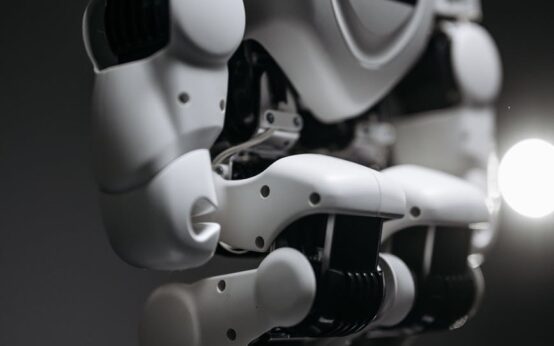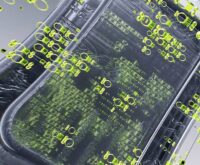It feels like we blinked, and suddenly AI is everywhere. From writing emails to creating stunning works of art, the technology has leaped from science fiction into our daily lives. But what’s the engine driving this incredible acceleration? The answer, in large part, is a series of astonishing deep learning breakthroughs that have fundamentally changed what machines are capable of. This isn’t just about faster computers; it’s about entirely new ways of thinking about problem-solving, creativity, and even scientific discovery itself. We’re not just witnessing incremental progress anymore. We’re living through a revolution.
Key Takeaways
- Transformers Aren’t Just Robots: The transformer architecture revolutionized natural language processing, enabling models like GPT-4 that understand and generate human-like text with uncanny ability.
- AI is Now a Scientist: Breakthroughs like AlphaFold are solving decades-old scientific problems, like protein folding, accelerating drug discovery and our understanding of life itself.
- Vision and Creativity Unleashed: Deep learning has given machines a powerful sense of sight, leading to advancements in autonomous driving and spawning a new era of AI-generated art and media.
- The Future is Multimodal: The next wave of innovation is focused on AI that can understand and integrate information from text, images, and sound simultaneously, creating a more holistic intelligence.
The Engine That Changed Everything: The Transformer Architecture
For a long time, processing language was a huge hurdle for AI. Computers are great with numbers, but understanding the nuance, context, and long-range dependencies in a simple sentence—let alone an entire book—was a monumental challenge. Early models like Recurrent Neural Networks (RNNs) processed text sequentially, like reading one word at a time. This worked, but they had a terrible memory. By the time they reached the end of a long paragraph, they’d often forgotten what the beginning was about. It was a fundamental bottleneck.
Then, in 2017, a paper from Google titled “Attention Is All You Need” dropped a bomb on the AI world. It introduced the Transformer architecture. It was a completely new approach. Instead of processing word by word, it could look at an entire sentence or passage at once. The secret sauce was the “attention mechanism.”
What is ‘Attention’ Anyway?
Imagine you’re reading this sentence: “The cat, which had been sleeping soundly on the warm, fuzzy mat, suddenly pounced.” When you read the word “pounced,” your brain instantly knows it refers to the “cat,” not the “mat.” You’re paying attention to the most relevant words, no matter how far apart they are. That’s precisely what the attention mechanism allows a machine to do. It weighs the importance of all the other words in the input when processing a single word. It can learn that “cat” is highly relevant to “pounced,” while “warm” is less so.
This was the key. It unlocked the ability to handle long-range dependencies and understand context on a massive scale. This single innovation is the direct ancestor of the large language models (LLMs) we see today:
- BERT (Bidirectional Encoder Representations from Transformers): A Google creation that learned to understand the context of a word by looking at both the words that come before it and after it. This dramatically improved search engines and language understanding tasks.
- GPT (Generative Pre-trained Transformer): An OpenAI project that used the transformer architecture to become incredibly good at predicting the next word in a sequence. This generative capability is what powers ChatGPT and its ability to write, code, and converse.
The transformer wasn’t just an improvement; it was a paradigm shift. It’s the foundational technology that made the current generative AI explosion possible.

Seeing is Believing: Leaps in Computer Vision
While language was being cracked, a parallel revolution was happening in computer vision. For years, teaching a computer to reliably identify an object in a picture—a cat, a car, a specific type of tumor—was notoriously difficult. Lighting, angles, and obstructions could easily fool the best algorithms.
Convolutional Neural Networks (CNNs) were the first major breakthrough here. Inspired by the human visual cortex, CNNs use layers of virtual filters to detect edges, textures, and shapes, gradually building up a complete picture of an object. The ImageNet competition, where algorithms compete to classify a massive library of images, became the proving ground. Year after year, deep learning models shattered records, eventually surpassing human-level performance on specific tasks.
From Recognition to Creation
But the real jaw-dropping moment came when these models moved from simply seeing to creating. This is where generative models like diffusion models come into play. Think of it like a sculptor starting with a block of marble and chipping away until a statue emerges. Diffusion models start with pure random noise (a staticky image) and, guided by a text prompt, gradually refine that noise over many steps until it becomes a coherent, often breathtaking, image.
This is the magic behind tools like DALL-E 2, Midjourney, and Stable Diffusion. They’ve democratized visual creation. You no longer need to be a master painter to bring a fantastical vision to life; you just need to be able to describe it. This has profound implications for artists, designers, and advertisers, blurring the line between human and machine creativity. The same underlying principles are now being applied to video generation, an even more complex frontier.
Cracking the Code of Life: More Deep Learning Breakthroughs in Science
Perhaps the most impactful, yet least publicly hyped, deep learning breakthroughs are happening in the hard sciences. For 50 years, one of the grand challenges in biology was the “protein folding problem.” Proteins are the workhorses of life, and their function is determined by their complex 3D shape. Predicting that shape from a sequence of amino acids was an impossibly complex task. There are more possible ways for a protein to fold than there are atoms in the universe. It was a problem that stumped scientists for decades.
Then came AlphaFold.
Developed by DeepMind (a subsidiary of Google), AlphaFold used a deep learning system, leveraging an architecture similar in spirit to transformers, to predict protein structures with astonishing accuracy. It didn’t just inch the field forward; it solved the problem. It was like going from trying to navigate with a compass to suddenly having a fully functional GPS.
The implications are staggering. Scientists can now predict the structure of millions of proteins, opening up new avenues for:
- Drug Discovery: Understanding a protein’s shape is crucial for designing drugs that can bind to it to treat diseases. AlphaFold is accelerating this process by years.
- Disease Understanding: Researchers can better understand how mutations that cause diseases like Alzheimer’s or cystic fibrosis affect protein shapes and function.
- Enzyme Design: We can now design novel enzymes for everything from breaking down plastic waste to creating more efficient biofuels.
This isn’t just an academic exercise. It’s a tool that is actively being used in labs around the world to push the boundaries of medicine and materials science. Similar deep learning approaches are being used to analyze medical scans with greater accuracy than human radiologists and to sift through genomic data to find patterns related to cancer and other genetic disorders.

What’s on the Horizon? The Next Frontier
As incredible as these advances are, we’re still in the early innings. The pace of research is relentless, and the next set of breakthroughs are already taking shape. So what’s next?
Multimodal AI
Humans experience the world through multiple senses at once. We see, hear, and read, and our brain seamlessly integrates it all. The next generation of AI aims to do the same. Models like GPT-4 are already showing early multimodal capabilities, able to analyze an image and answer questions about it. The future is an AI that can watch a video, listen to the audio, and read the subtitles to gain a complete, holistic understanding of the content. This will enable more capable virtual assistants, more intuitive data analysis tools, and richer human-computer interaction.
Efficiency and Agency
Today’s cutting-edge models are enormous. They are incredibly expensive to train and run, consuming vast amounts of energy. A major area of research is in making these models smaller, faster, and more efficient without sacrificing performance. Furthermore, researchers are working on giving models more agency—the ability to take a complex goal, break it down into steps, use tools (like browsing the web or running code), and work towards a solution autonomously. This is the difference between a chatbot that can answer a question and an AI agent that can book an entire vacation for you.
AI in the Physical World
The final frontier is moving AI out of the computer and into our world. Deep learning is the brain that will power the next generation of robotics. From warehouse automation to sophisticated humanoid robots, reinforcement learning—a technique where models learn through trial and error, like a human does—is helping robots learn to walk, manipulate objects, and navigate complex, unpredictable environments.
Conclusion
The deep learning breakthroughs of the last decade have been nothing short of extraordinary. They have equipped machines with the ability to understand our language, interpret our world, and even solve fundamental scientific riddles that have long been beyond our grasp. The transformer architecture, generative models, and scientific applications like AlphaFold aren’t just isolated events; they are interconnected pieces of a much larger puzzle. They are building blocks for a future where artificial intelligence becomes an even more integrated and powerful partner in human progress, creativity, and discovery. The revolution is well underway, and it’s changing everything.
FAQ
Is deep learning the same as artificial intelligence?
Not exactly. Think of it in layers. Artificial Intelligence (AI) is the broad, overarching field of creating intelligent machines. Machine Learning (ML) is a subfield of AI where machines learn from data without being explicitly programmed. Deep Learning is a specialized subfield of ML that uses deep neural networks (networks with many layers) to solve complex problems. So, all deep learning is AI, but not all AI is deep learning.
What is the most significant deep learning breakthrough to date?
This is debatable, but two strong contenders stand out. The invention of the Transformer architecture in 2017 is arguably the most impactful for the current wave of generative AI, as it underpins nearly all modern large language models. However, for a tangible scientific impact, AlphaFold’s solution to the protein folding problem is a monumental achievement that has already accelerated biological and medical research in ways that were unimaginable just a few years ago.
What skills are needed for a career in deep learning?
A career in deep learning requires a strong foundation in several areas. Key skills include proficiency in programming languages like Python, a solid understanding of mathematics (especially linear algebra, calculus, and probability), experience with deep learning frameworks like TensorFlow or PyTorch, and a good grasp of data structures and machine learning principles. Increasingly, domain-specific knowledge (e.g., in biology, finance, or linguistics) is also becoming highly valuable.



 Navigating the Ethical Concerns of Artificial Intelligence
Navigating the Ethical Concerns of Artificial Intelligence  AI for Small Businesses: A Practical Guide to Growth
AI for Small Businesses: A Practical Guide to Growth  AI and Automation: Reshaping Our World & Work
AI and Automation: Reshaping Our World & Work  AI and Automation: The Future of Work is Here
AI and Automation: The Future of Work is Here  AI in Healthcare: Revolutionizing Medicine for Tomorrow
AI in Healthcare: Revolutionizing Medicine for Tomorrow  AI in Healthcare: Revolutionizing Medicine & Patient Care
AI in Healthcare: Revolutionizing Medicine & Patient Care  Reading Smart Contract Audits: A Beginner’s Guide
Reading Smart Contract Audits: A Beginner’s Guide  Dynamic NFTs: The Evolving Future of Digital Assets
Dynamic NFTs: The Evolving Future of Digital Assets  How Macroeconomics Drives the Crypto Market (2024 Guide)
How Macroeconomics Drives the Crypto Market (2024 Guide)  How to Set Up a Node: The Ultimate Guide
How to Set Up a Node: The Ultimate Guide  Crypto Arbitrage Trading: A Beginner’s Guide (2024)
Crypto Arbitrage Trading: A Beginner’s Guide (2024)  The Business of NFTs: How Top Brands Are Using Them
The Business of NFTs: How Top Brands Are Using Them